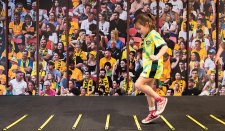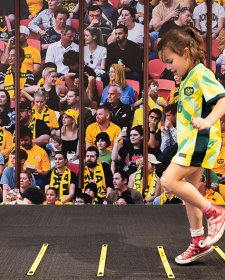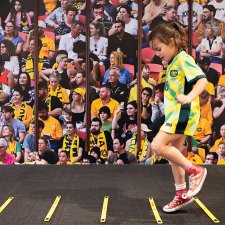- About us
- Support the Gallery
- Venue hire
- Publications
- Research library
- Organisation chart
- Employment
- Contact us
- Make a booking
- Onsite programs
- Online programs
- School visit information
- Learning resources
- Little Darlings
- Professional learning
George Johnston (1912-1970), writer, joined the Melbourne Argus as a cadet reporter and became its war correspondent during World War II. He married, and had a daughter, but in 1946 he began an affair with a colleague, the writer Charmian Clift. They were both sacked, and Johnston joined the Sydney Sun, publishing two novels in 1948. The couple moved to London, then Greece, where he wrote the semi-autobiographical My Brother Jack (1964). When the family returned to Australia, he wrote its sequel, Clean Straw for Nothing (1969). Both novels won the Miles Franklin Award. He began work on the final volume of the projected trilogy, but he had twice undergone lung surgery, and in July 1969 Clift committed suicide. Johnston died the following year. The incomplete third volume, A Cartload of Clay, was published posthumously in 1971.
Collection: National Portrait Gallery
The series 'David Moore: From Face to Face' was acquired as a gift of the artist and with financial assistance from Timothy Fairfax AC and L Gordon Darling AC CMG 2001
Tim Fairfax AC (54 portraits supported)
The Gordon Darling Foundation (36 portraits supported)



Create your own fan bracelet, design a soccer card, and show off your skills with fun movement challenges.



Celebrate our new commissioned portrait of the CommBank Matildas by artist Angela Tiatia.



Discover the magic of sport and storytelling through art and play!